- Home
- News and events
The Lazio Region approves project DIME (Elastic Medical Devices in urology) a collaboration between the NAST Centre and the Department of Science of the University Roma Tre, coordinated by professor Silvia Licoccia.
The Lazio Region approves project DIME (Elastic Medical Devices in urology)
a collaboration between the NAST Centre and the Department of Science of the University Roma Tre, coordinated by professor Silvia Licoccia.
Article Version – pdf: English – Italian
Professor Carla Andreani member of STFC’s Science Board
P rofessor Carla Andreani, has been selected as member of Science and Technology Facilities Council’s Science Board’s.
rofessor Carla Andreani, has been selected as member of Science and Technology Facilities Council’s Science Board’s.
The Science Board is the main Scientific Advisory Committee of the STFC, providing scientific and strategic guidelines, assessments and advice on all national and international programs realized by STFC. Within this mission the Science Board is supported by advisory and peer-review committees, and by others UKRI advisory committees (UK Research and Innovation).
In 2016 Professor Andreani was awarded the “Giuseppe Occhialini” medal from Institute of Physics of the United Kingdom and Italian Physics Society, Citation “For her outstanding contributions to novel experimental techniques and methods in neutron spectroscopy and her tireless commitment to fostering the British-Italian collaboration in neutron science”.
Group Photo 2016
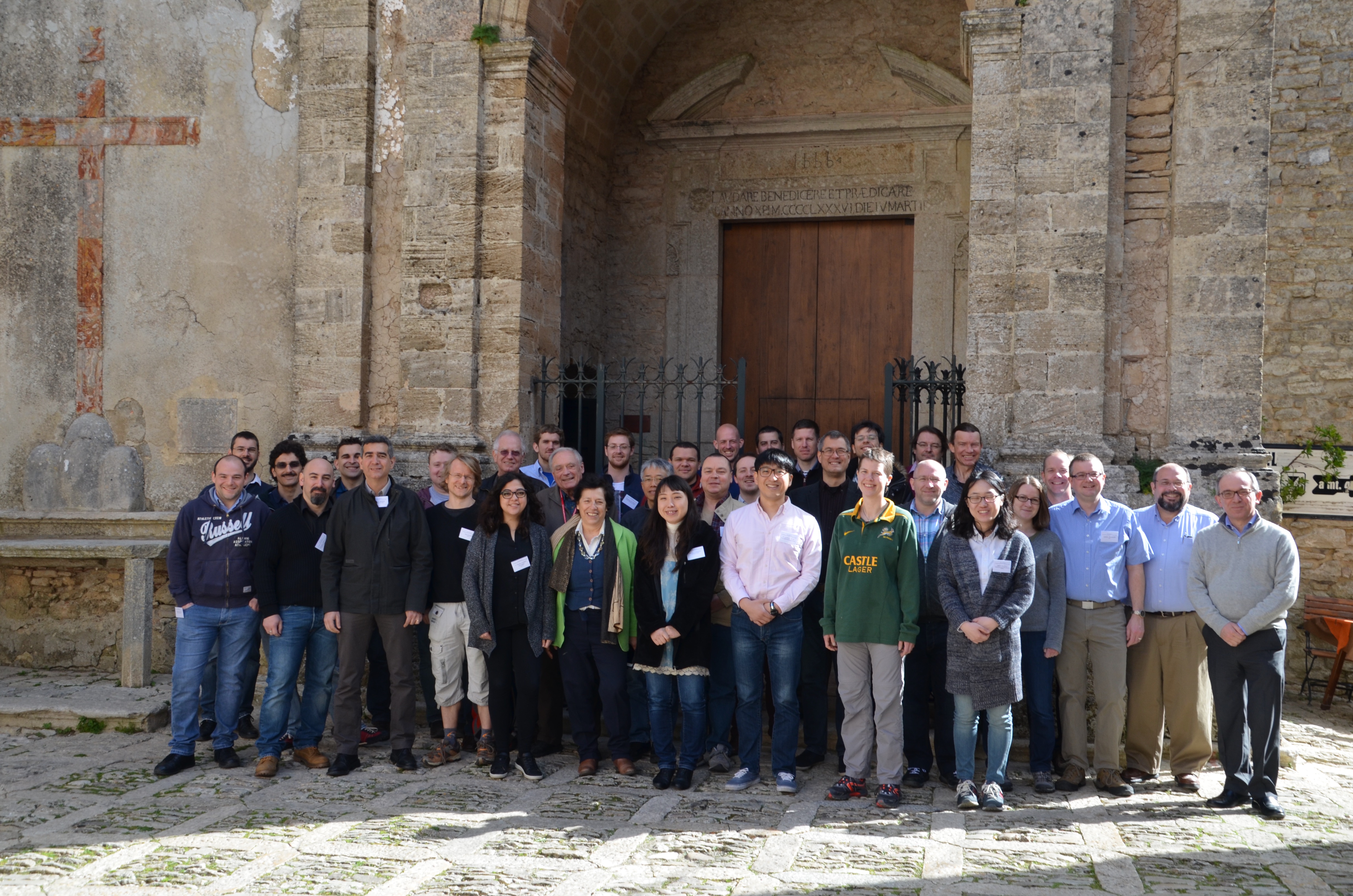
Erice school – “NEUTRON SCIENCE AND INSTRUMENTATION” II course
Professor Carla Andreani, sixth on the left, first row
RELATED LINKS
Science and Technology Facilities Council (STFC)
NEWS DATE: September 2020
ISIS@MACH webROADSHOW 25-29 May 2020
|
|
 |
Users are introduced to the potential and research opportunities, services and access procedures to instrumentation available
at the research
infrastructures ISIS@MACH and ISIS pulsed neutron and muon source. Webseminaries are addressed to academic, administrative and industrial users.
When: 25th – 29th of May 2020
How: Teams platform
Who:
- Professor Aldo Di Carlo (University of Roma Tor Vergata)
- Professor Carla Andreani (University of Roma Tor Vergata)
- Professor Silvia Licoccia (University of Roma Tor Vergata)
- Professor Felix Fernandez-Alonso (Materials Physics Center&Ikerbasque)
- Professor Maria Paula Marques (University of Coimbra)
- Dr. Carlo Cazzaniga (ISIS pulsed neutron and muon source)
- Dr. Giulia Festa (Centro Ricerche “Enrico Fermi”)
- Dr. Marianna Mamusa (CGSI-Firenze)
- Dr. Giovanni Romanelli (ISIS pulsed neutron and muon source)
- Dr. Roberto Senesi (University of Roma Tor Vergata)
Welcome address Jill Morris Her Majesty’s Ambassador to the Italian Republic and to the Republic of San Marino
A new Research Infrastructure for Composite Materials
Seminario – Aula “U.M. Grassano”, Dipartimento di Fisica
Giovedì , 19 Dicembre 2019, ore 13,30

ISIS@MACH: A new partnership between Tor Vergata and the neutron/muon source facility ISIS (UK)
Prof Aldo Di Carlo& – Prof Roberto Senesi*
&(Coordinatore ISIS@MACH) – CNR-ISM-Dipartimento Ingegneria Elettronica *Dipartimento di Fisica
A new Research Infrastructure, ISIS@MACH, (Lazio Region, Italy), a partnership between Tor Vergata-Centro Fermi, with ISIS Pulsed Neutron and Muon Source (Region Oxfordshire-United Kingdom). ISIS@MACH will act as a Hub of the UK based ISIS pulsed neutron and muon source, a research facility. The project is funded by Region Lazio under the specific funding programme POR FESR 2014-2020 to strengthen Research Infrastructures.
Since 1985, the collaboration between academics from University of Rome Tor Vergata and scientists from ISIS neutron and muon source has continued to blossom with great enthusiasm and commitment on both parts. This represents a new stage in the longstanding relationship between the two institutions, expands the collaboration with Centro Fermi, which will enable both Italian and UK researchers to pool knowledge and experience with collaborators across UK and Italy, respectively, recognizing the value light, neutron and muon probes bring to multidisciplinary research.
Access of ISIS@MACH will be open to academics and industrial users. There are a number of routes for academics and industry to access beamtime and both ISIS@MACH and ISIS operate Facility Access Panels (FAPs) to peer review all instrument and neutron beamtime proposals. ISIS@MACH are free at the point of access for Tor Vergata academic researchers, provided the results from experiments are published in the public domain. Fully confidential fast-tracked use of the instruments is also available for industrial and commercial customers. User ready to put forward a proposal will do that through a dedicated platform, ISIS@MACH Online Proposal System currently under construction which will be interfaced with the ISIS Online Proposal System.
ISIS@MACH will address the understanding the properties of materials on the nanoscale which provides the opportunity to develop advanced materials, tailoring their properties for specific applications, tackling global challenges across life, chemical, medical, physical and engineering sciences as well as in arts, heritage and archaeology. There is increasing recognition that addressing varied problems such as green energy or antibiotic resistance, the digital economy or food security, requires a multidisciplinary approach. The University of Rome “Tor Vergata”, the Center for Studies and Research “Enrico Fermi” at ISIS@MACH and the ISIS neutron and muon source will work together bringing expertise in areas including aerospace engineering, biomaterials, building greener economies, cultural heritage, and energy research.
I neutroni per svelare i segreti di antiche ossa combuste
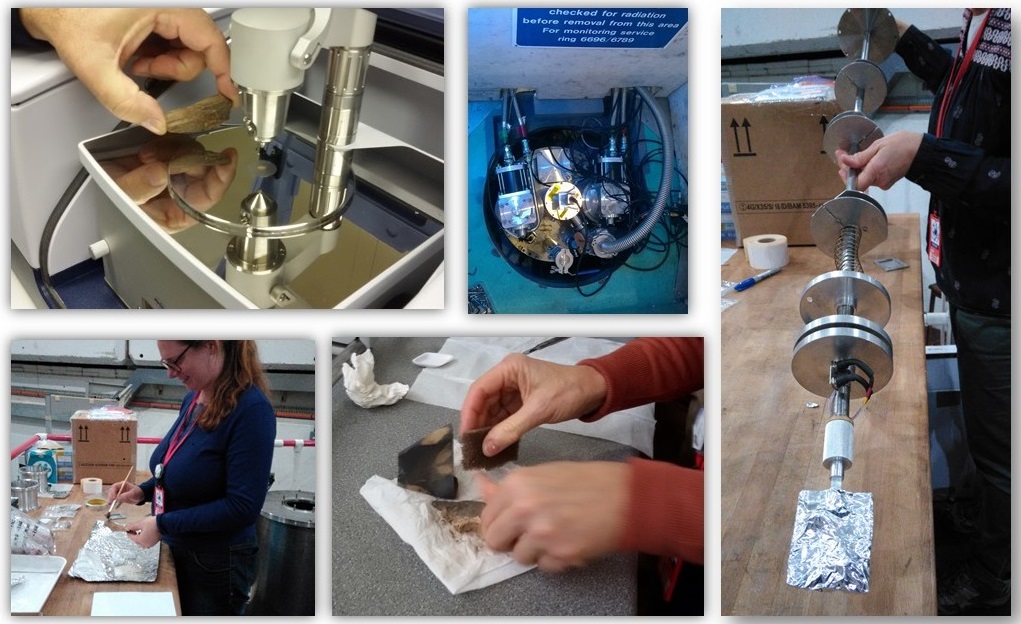 In un recente studio sperimentale su resti ossei combusti provenienti da differenti siti archeologici italiani di epoche differenti – dall’età del bronzo al medioevo – un team di ISIS@MACH ha ottenuto nuove informazioni sui processi di combustione nei reperti ossei, le pratiche funerarie, di sepoltura e di cucina di civiltà passate. La ricerca è stata effettuata sia presso ISIS@MACH sia presso ISIS pulsed neutron and muon source utilizzando lo scattering di neutroni presso la linea di fascio TOSCA.
In un recente studio sperimentale su resti ossei combusti provenienti da differenti siti archeologici italiani di epoche differenti – dall’età del bronzo al medioevo – un team di ISIS@MACH ha ottenuto nuove informazioni sui processi di combustione nei reperti ossei, le pratiche funerarie, di sepoltura e di cucina di civiltà passate. La ricerca è stata effettuata sia presso ISIS@MACH sia presso ISIS pulsed neutron and muon source utilizzando lo scattering di neutroni presso la linea di fascio TOSCA.
Le ossa riscaldate subiscono cambiamenti micro e macroscopici e, a seguito della perdita della componente organica, si restringono e le loro dimensioni cambiano. Spesso le tecniche standard oggi disponibili non permettono l’identificazione e l’attribuzione sia dell’età sia del sesso.
In questo studio, pubblicato su Science Advances, ha dimostrato l’efficacia dell’utilizzo della spettroscopia vibrazionale per l’identificazione delle temperature di combustione alle quali sono stati soggetti i resti ossei. I risultati ottenuti sui reperti antichi sono stati confrontati con gli spettri vibrazionali ottenuti da ossa umane moderne soggette a combustione in condizioni controllate per l’identificazione delle specifiche condizioni di riscaldamento. Attravesro l’indagine sperimentale, tramite le temperature di combustione raggiunte, sono state identificate le pratiche funerai adottate in passato: uno scheletro di età romana ritrovato in un’antica necropoli nei pressi di Roma è risultato combusto a differenti temperature tra i 600 ○C e gli 800 ○C; questa evidenza è stata interpretata come la pratica funeraria di bustum sepulcrum per la quale il defunto veniva cremato direttamente in fossa.
Questo studio pionieristico fornisce agli archeologi e agli antropologi nuove informazioni sugli usi di antiche civiltà. Obiettivo del progetto è la realizzazione sia di esperimenti su nuovi reperti ossei e scheletrici sia di un database nel quale raccolgliere i risultati di tutti gli esperimenti, in modo tale da poter raccogliere e collegare i diversi bio-marcatori identificati in resti combusti in relazione a specifiche temperature e condizioni ambientali di combustione.
Istituzioni coinvolte: ISIS@MACH, ISIS pulsed neutron and muon source (UK), Università di Coimbra (Portogallo).
Link all’articolo: https://advances.sciencemag.org/content/5/6/eaaw1292
ISIS@MACH
https://twitter.com/UTORV
https://www.facebook.com/unitorvergata/
https://twitter.com/centronast
ISIS pulsed neutron and muon source (UK)
Twitter: @STFC_Matters, @RutherfordApLab, @isisneutronmuon
https://www.facebook.com/RutherfordAppletonLaboratory/
https://www.instagram.com/bigscience_stfc/?hl=en
https://www.linkedin.com/company/stfc
Università di Coimbra
https://www.facebook.com/univdecoimbra/
22/10/2019 – ISIS@MACH, Hub of ISIS Neutron and Muon Source
Hub of ISIS pulsed neutron and muon source and Museo Storico della Fisica e Centro Studi e Ricerche Enrico Fermi.
@NovelliGnovelli together with @DanieleLeodori, @RegioneLazio presented ISIS@MACH, the new Research Infrastructure at #unitorvergata, hub of @STFC_Matters @RutherfordApLab, @isisneutronmuon @centrofermi for experiments of multidisciplinary research to study the propoerties of composite materials at the nanoscale.
STFC’s @isisneutronmuon is celebrating the creation of its first overseas hub, ISIS@MACH. The collaboration with @unitorvergata will help scientists understand the properties of materials on the nanoscale.
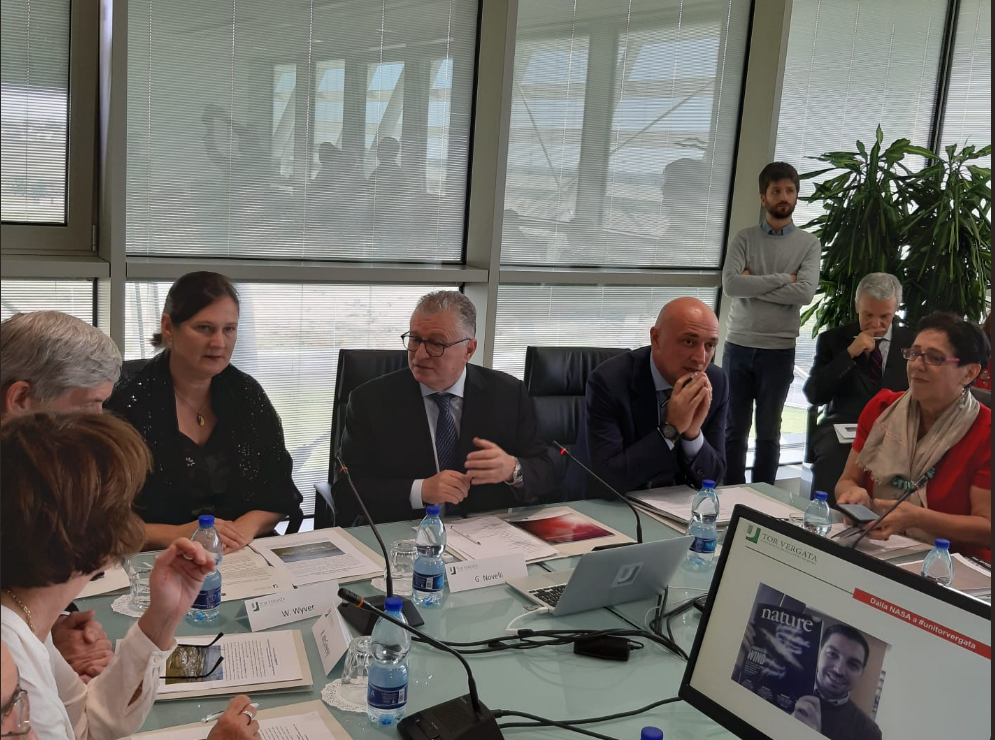 |
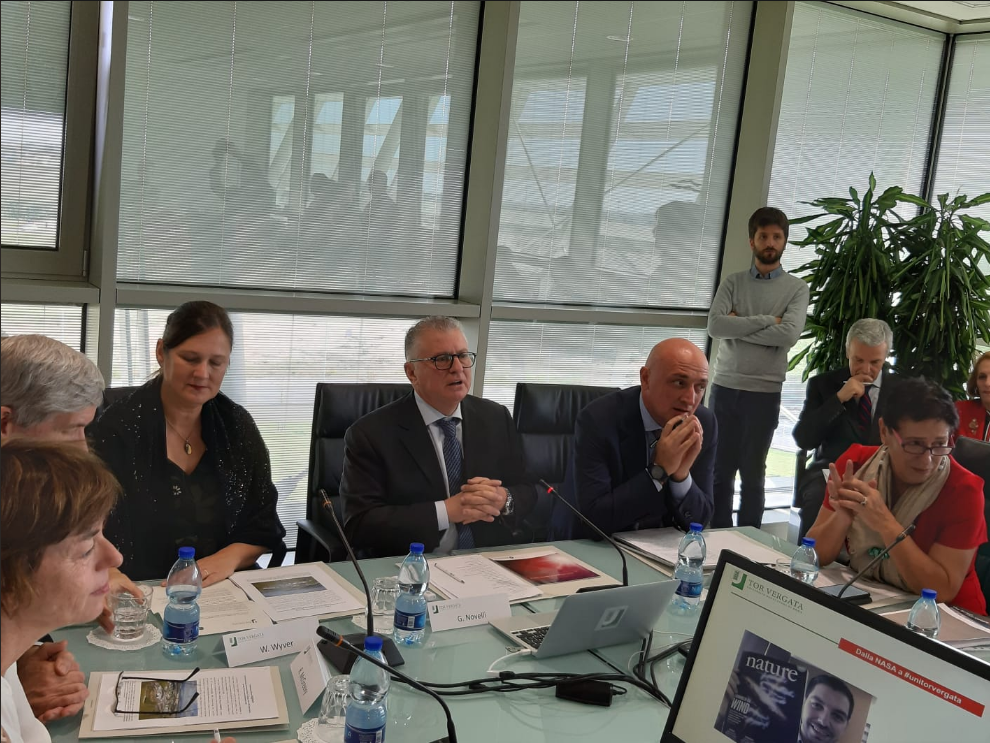 |
Experiments of multidisciplinary research at ISIS@MACH and ISIS
RESEARCH at ISIS pulsed neutron and muon source
 (Credit: STFC) (Credit: STFC) |
Drug delivery stays on target – A team from the University of Rome Tor Vergata (Professor Gaio Paradossi, Dr Ester Chiessi, Dr Shivkumar Ghugare, Dr Anka Mateescu and Mr. Sharad Pasale), working in collaboration with ISIS scientists (Dr Mark Telling and Dr Victoria García Sakai), is using neutron scattering to study the efficacy of constructing such drug delivery vehicles from bio compatible polymers. In the future, injectable hydrogel balls could deliver anti-cancer drugs to target mutant cells, providing a healthier alternative to radiology. |
 (Credit: STFC) (Credit: STFC) |
Quantum effects explain similar melting points of light and heavy water – Water is a familiar substance. It is vital to life and covers over 70% of the surface of the Earth. Roberto Senesi and Giovanni Romanelli (ISIS UK) from the University of Rome Tor Vergata in Rome, Italy, said, “This is the first measurement of the oxygen momentum distribution in water, made possible by the most recent advances in Electron-volt Neutron Spectroscopy at ISIS, and our experiment gives a nice example of what VESUVIO can offer.” |
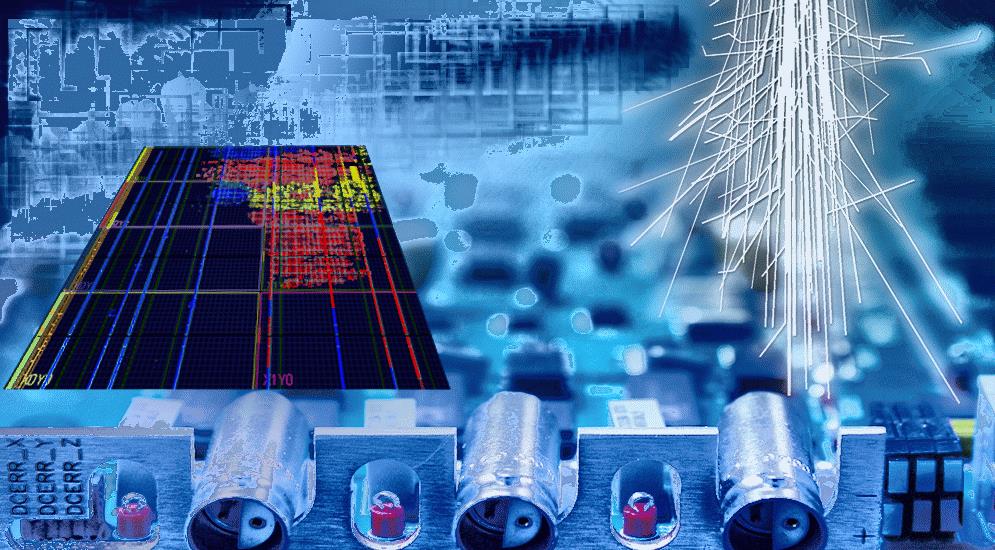 (Credits: STFC) (Credits: STFC) |
Testing the robustness of space electronics against more than 100,000 years’ worth of neutrons – Of the many challenges involved in space travel the threat of high energy neutrons may have never crossedyour mind. But these subatomic particles can disrupt the electronics that space missions rely on, so we must thoroughly test their impact. “Neutrons on the moon are produced by spallation interaction of primary cosmic rays on materials, the same process as on the ISIS neutron source” says ChipIr Instrument Scientist Dr Carlo Cazzaniga. “Therefore ChipIr fast neutrons are representative of cosmic ray neutrons in space.” “High energy neutrons have been a significant focus of the ISIS and University of Rome Tor Vergata collaboration since 2006, which has been of success for both British and Italian communities operating in engineered systems from aviation to automotives. I expect these new results to impact on a wide range of manufacturers which are becoming more and more concerned by the neutron threat in space.” Says Carla Andreani from University of Rome Tor Vergata. |
RESEARCH at ISIS@MACH

|
Two-dimensional material, such as Graphene and MXenes, can tailor the interfaces in advanced printable solar cells based on halide perovskite. The team of the Centre for Hybrid and Organic Solar Energy (CHOSE) of the University of Rome Tor Vergata, leaded by prof. Aldo Di Carlo, together with researchers of CNR, INFN and the National University of Science and Technologies (NUST-MISIS) of Moscow (Russia) discovered that work-function can be tailored by proper functionalization of MXenes. This permitted to increase the efficiency of printed solar cells beyond 20% (A. Agresti et al., Nature Materials 2019). Here, charge transport in this multi-crystalline system is related to the vibrational properties of the materials. A new investigation made by CHOSE’s researcher at ISIS, together with colleagues of Tor Vergata University is revealing the peculiar vibrational property of perovskite and the influence on the charge current flow. |
|
|
NEURO CON – TE: STRETCHABLE ELETRONICS TOWARDS CLINICAL APPLICATION Stretchable wires based on bundled single wall carbon nanotubes ( SWCNT) graftend on: (a-e) polyethylene, as an example of a moderately plastic substrate; and on (f-g) poly-isoprene as an example of highly elastic substrate. Both are shown in their fully relaxed state and under stretching. Panels (a) and (b): SWCNT/Polyethylene under severe stretching; doubling the lenght of the polymer substrate produces a bellows like structure that is still consuctive. Panel (c): SEM imaging shows single nanotube bundles bridging the majority of the cracks that from the extended bellow. Panel (d): the unstretched, suspended polymer film shows wrinkling due to nanotube grafting, which disappears on slight stretching (e). Panel (f) and (g) show a SWCNT conductor grafted on poly-isoprene and the variation of its electrical resistance from 641 to 787 kOhm on stretching the composite device. |
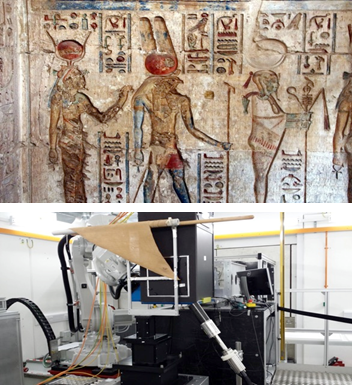 (Credit: STFC) (Credit: STFC) |
Unravelling the mystery of textile inks in ancient Egypt – Textiles from the tomb of a royal architect of ancient Egypt could tell us how ink technology developed, from marking fabric to writing text on papyrus and parchment later on. Dr Festa said: “This research places the use of metallic inks in Ancient Egypt for the first time, which provides us with new information about the origins of inks in ancient Mediterranean cultures.” Scientists used the IMAT instrument at ISIS to investigate the inks without damaging the ancient textiles. |
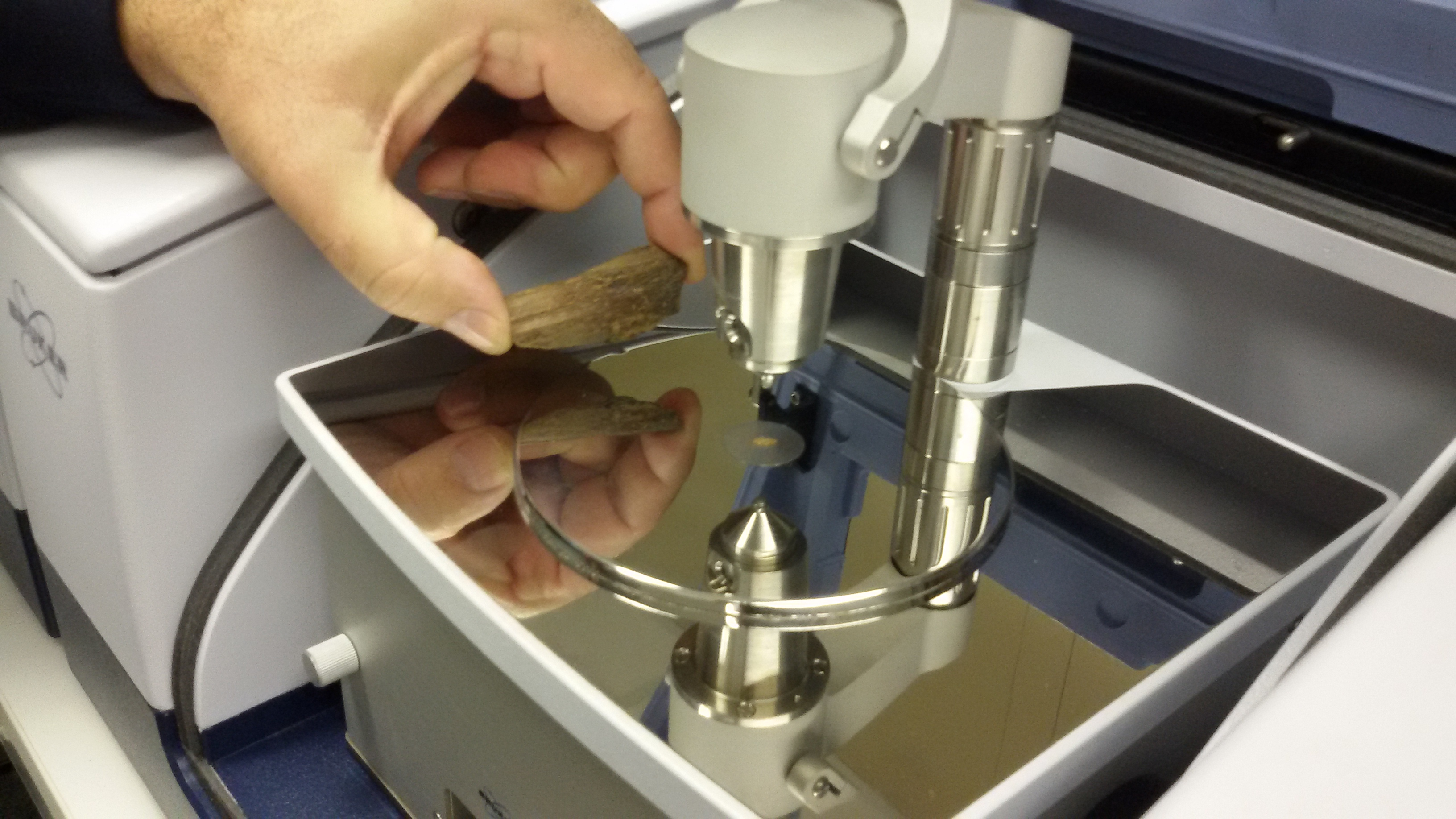 (Credits: ISIS@MACH) (Credits: ISIS@MACH) |
Ancient burned bones tell us about past cultures. |
 |
Revealing the network dynamics of human brain. |
2019 O’Ceallaigh medal to Prof. Piergiorgio Picozza
 Professor Piergiorgio Picozza has received the O ‘Ceallaigh medal, Thursday 25 July in the context of the inauguration ceremony of the “36th International Cosmic Ray Conference (ICRC 2019)”, awarded him by the Astroparticle Physics Commission of the International Union of Pure and Applied Physics (IUPAP) “for his outstanding contribution to the physics of cosmic rays over an extended career”.
Professor Piergiorgio Picozza has received the O ‘Ceallaigh medal, Thursday 25 July in the context of the inauguration ceremony of the “36th International Cosmic Ray Conference (ICRC 2019)”, awarded him by the Astroparticle Physics Commission of the International Union of Pure and Applied Physics (IUPAP) “for his outstanding contribution to the physics of cosmic rays over an extended career”.
International Union of Pure and Applied Physics – IUPAP
International Telematic University Uninettuno
Seminar: Description of his personal experience in the Fame Lab initiative
Dr. Marco Carlotti
University of Pisa, Italy
“Description of his personal experience in the Fame Lab initiative”
5th February, 10:00 a.m.
FAMELab 2019: il primo talent della scienza

Il prossimo 26 febbraio presso il Centro Congressi e Rappresentanza Villa Mondragone, (Via Frascati 51 – Monte Porzio Catone) si svolgeranno le selezioni locali di FameLab 2019, il primo talent internazionale di comunicazione scientifica per giovani ricercatori e studenti universitari under 40. I partecipanti sono chiamati a raccontare con chiarezza, esattezza e carisma, in soli 3 minuti e senza l’aiuto di grafici, proiezioni o video, il proprio oggetto di studio o argomento scientifico che li appassiona. Il vincitore nazionale si confronterà con i vincitori della competizione in altri 30 paesi del mondo. La finale internazionale è prevista a giugno 2019 durante il Cheltenham Science Festival, nel Regno Unito.
FameLab 2019 coinvolge 12 città nelle quali verranno selezionati 20 finalisti che parteciperanno ad aprile alla masterclass in comunicazione della scienza in vista della finale nazionale di maggio e della finale internazionale di giugno.
LE SELEZIONI DI ROMA
Le selezioni locali che si svolgeranno a Roma sono previste per il 26 febbraio 2019 presso Villa Mondragone, Centro Congressi e di Rappresentanza dell’Università degli Studi di Roma “Tor Vergata” (Via Frascati 51, Monte Porzio Catone)
FORMAZIONE PER GLI ISCRITTI
Per gli iscritti alla competizione sono inoltre previsti due eventi di formazione nelle seguenti date:
• 4 febbraio 2019 (Associazione Italiana per la Ricerca Industriale – AiRI)
• 5 febbraio 2019 (Museo Storico della Fisica e Centro Studi e Ricerche “Enrico Fermi”)
Per iscrizioni: famelab_TOV


SIF-SoNS Prize “Neutrons Matter” 2018
The School of Neutron Scattering “Francesco Paolo Ricci” (SoNS) is glad to announce that Dr. Pierfrancesco Ulpiani is the winner of the first edition of the joint SIF-SoNS “Neutrons Matter” 2018 prize, “For his relevant experimental achievements in the optimization of detection and energy analysis of electronvolt neutrons, and their applications to the measurement of zero point kinetic energy in condensed ice phases”.
The prize was received today, September 17th, from Prof.ssa Luisa Cifarelli, president of the Italian Physical Society (SIF), and Prof. Roberto Senesi, president of the School of Neutron Scattering “Francesco Paolo Ricci”, during the opening ceremony of the 104th Annual National Congress of the Italian Physical Society (SIF) held at the Università della Calabria.
Dr. Ulpiani, graduated in physics at the Università degli Studi di Roma “Tor Vergata”, is currently a PhD student in “Materials for Health, Environment and Energy” at the Università degli Studi di Roma “Tor Vergata”.
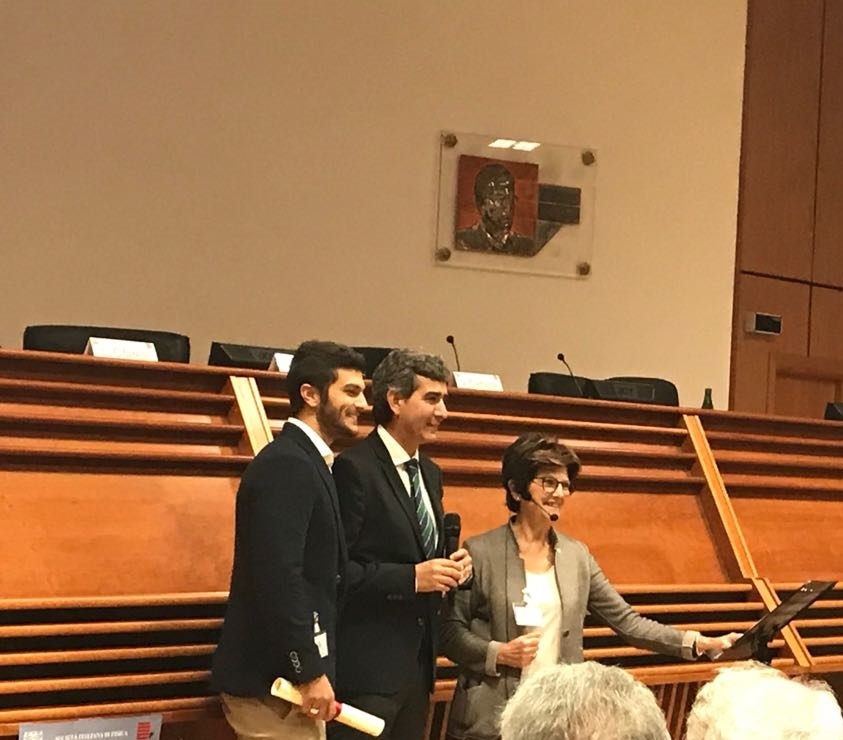
Further information at:
University of Rome Tor Vergata
http://sons.uniroma2.it/news-events/prize-sif-sons-neutrons-matter-2018/
https://www.sif.it/attivita/altri_premi
https://www.sif.it/attivita/altri_premi/bando_neutrons-matter
https://congresso.sif.it/atticon/vincitori-premi-sif-2018



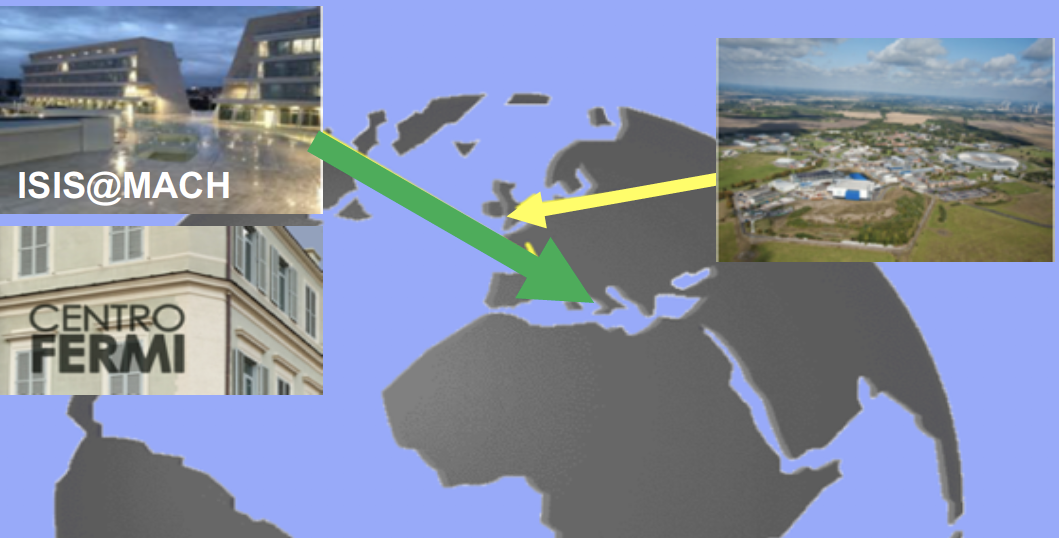
 (Credits: ISIS@MACH)
(Credits: ISIS@MACH)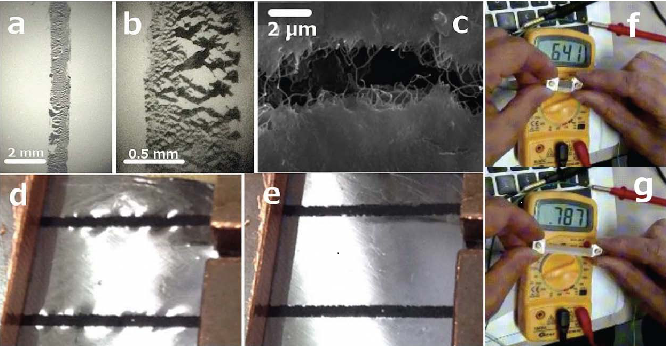 (Credits: ISIS@MACH)
(Credits: ISIS@MACH)